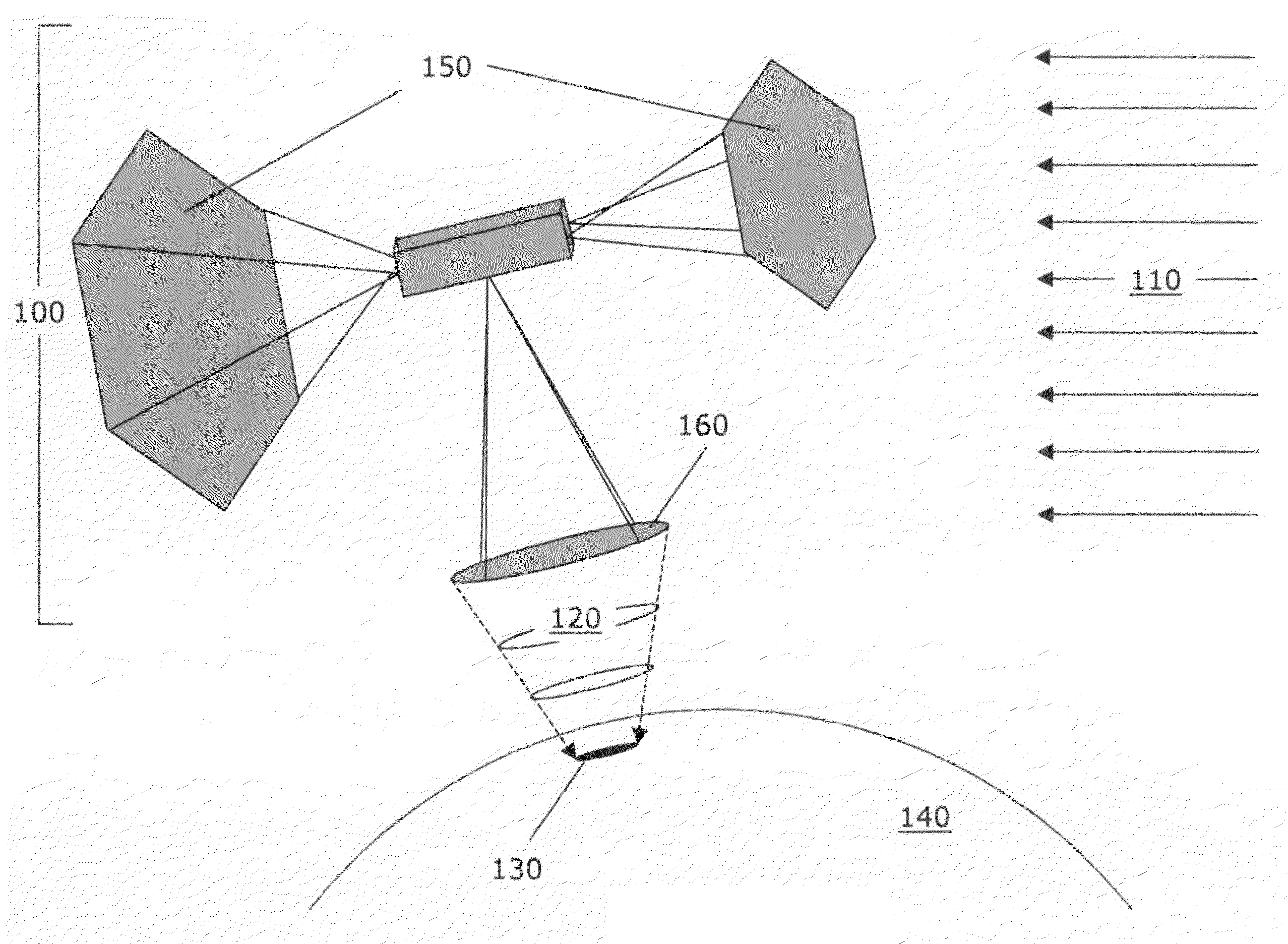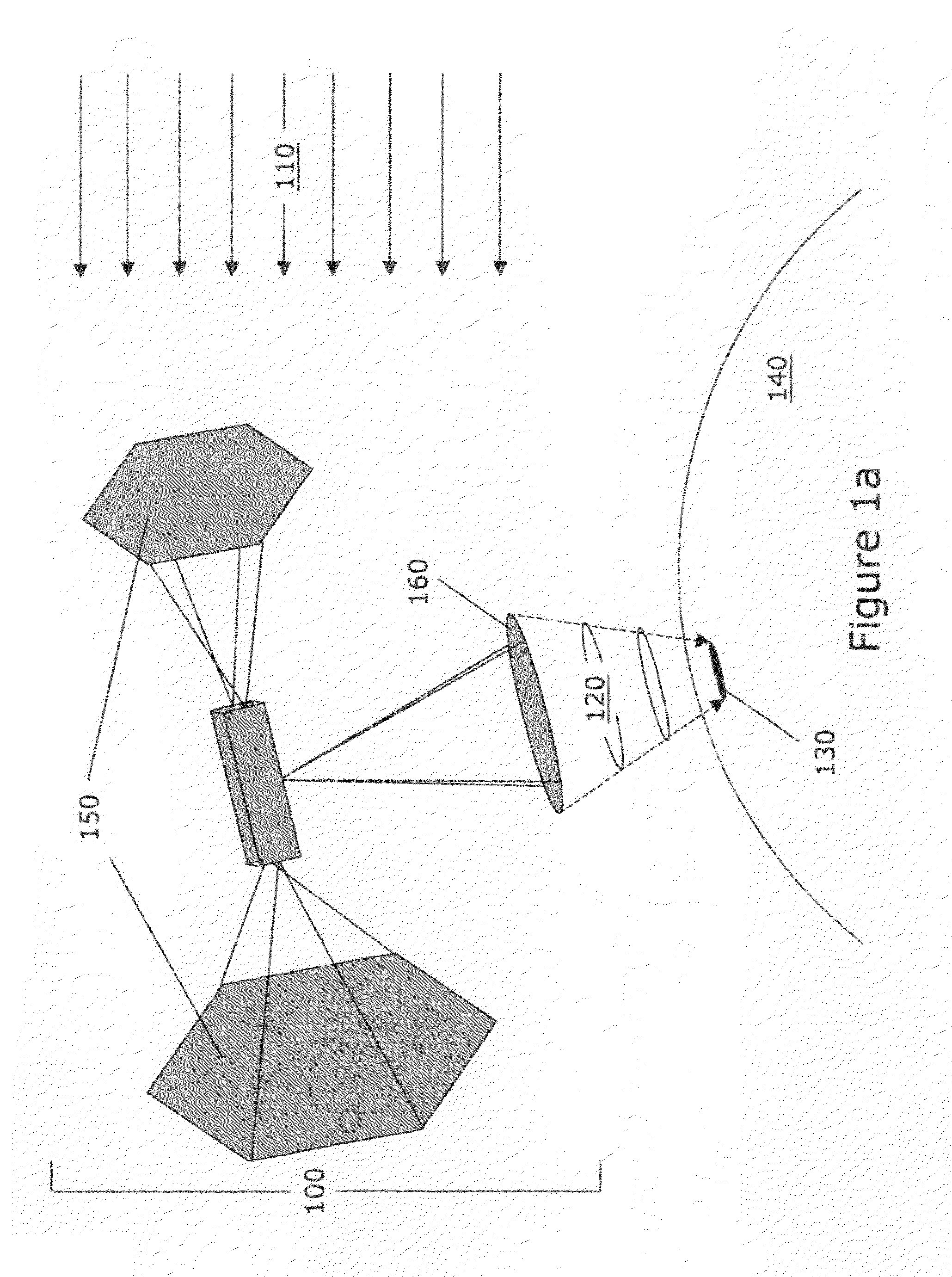Process and method of making fuels and other chemicals from radiant energy
- Summary
- Abstract
- Description
- Claims
- Application Information
AI Technical Summary
Benefits of technology
Problems solved by technology
Method used
Image
Examples
example 1
The Invention(s) When Operated for the Production of Propellants and Other Chemicals on the Surface of Mars
[0183]Plans for the exploration of Mars include the production of propellants and other chemicals using feedstock materials from the Martian atmosphere. For example, the document, “Human Exploration of Mars: The Reference Mission of the NASA Mars Exploration Study Team” (NASA Special Publiction 6107), presents a preliminary description of a propellant production plant that produces 5.8 metric tones (MT) of methane (CH4) and 20.2 MT of oxygen (O2), to be used as propellant for the return of humans to Earth. The feedstocks for this are carbon dioxide (CO2) and hydrogen (H2). Methane is described as being produced through the use of the exothermic Sabatier Process Reaction:
CO2+3H2→CH4+H2O,
and oxygen can be produced by two alternative processes, water electrolysis and CO2 electrolysis. More recently, the Reverse Water Gas Shift (RWGS) reaction has been identified as an alternative ...
example 2
The Invention(s) When Operated for the Production of Propellants and Other Chemicals on the Lunar Surface
[0188]Data from the Lunar Prospector and Clementine missions suggest that water (and perhaps other volatiles) is present in cold traps on the lunar surface, in the vicinity of the north and south poles of the Moon. Upon confirmation, it is anticipated that lunar water will be used as feedstocks for producing oxygen and oxygen-fuel propellant mixes for future human missions to the Moon.
[0189]Based on an assumption of two missions per year, lunar outposts are expected to require about 8-10 MT of oxygen per year. Hydrogen and oxygen can be produced from lunar water through electrolysis, or alternately, through the use of a thermochemical water-splitting process, such as any number of such processes that are currently under investigation for terrestrial applications. These include but are not limited to the following listing:[0190]Zinc oxide process[0191]Cadmium carbonate process[019...
example 3
The Invention(s) When Operated for the Production of Chemicals on Earth
[0203]Terrestrial applications encounter a different cost dynamic than applications on planetary bodies. As opposed to the lunar case, where it is less expensive to place hardware mass in orbit than on the surface, for applications on Earth it is generally less expensive to retain hardware on the surface than place it in orbit. However, there are still instances where orbiting systems may provide substantial cost advantages.
[0204]For terrestrial applications, the inventions described herein consist of surface installations, where the concentrators, thermal receivers and thermochemical processor systems are located. In one preferred embodiment, the system consists of a segmented-mirror, parabolic dish concentrator that tracks the sun during the daytime, delivering 100 kWr (kilowatts of radiant energy) to the thermal receiver. Portions of the thermochemical processor, located at or in close proximity to the focal p...
PUM
 Login to View More
Login to View More Abstract
Description
Claims
Application Information
 Login to View More
Login to View More - R&D
- Intellectual Property
- Life Sciences
- Materials
- Tech Scout
- Unparalleled Data Quality
- Higher Quality Content
- 60% Fewer Hallucinations
Browse by: Latest US Patents, China's latest patents, Technical Efficacy Thesaurus, Application Domain, Technology Topic, Popular Technical Reports.
© 2025 PatSnap. All rights reserved.Legal|Privacy policy|Modern Slavery Act Transparency Statement|Sitemap|About US| Contact US: help@patsnap.com



